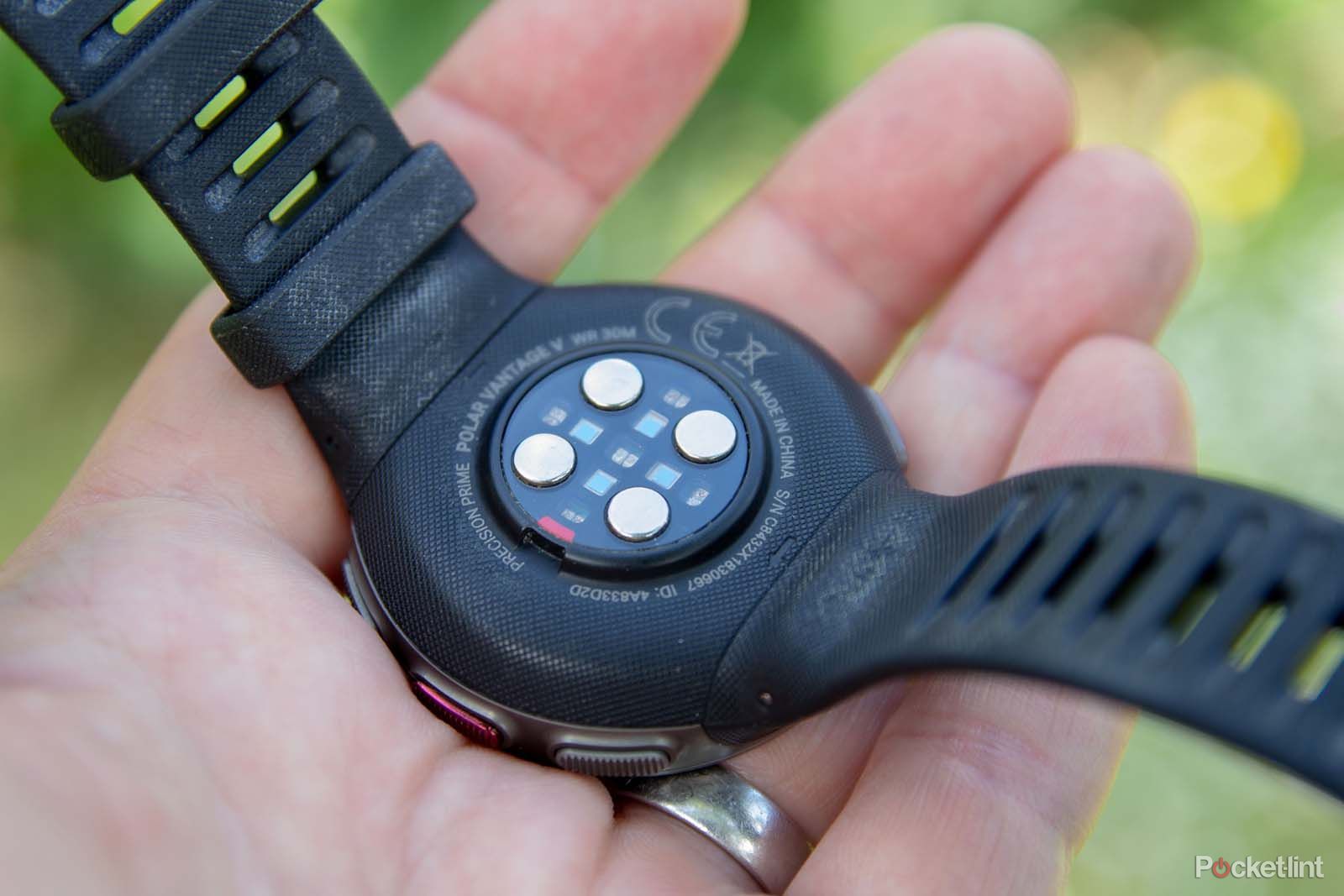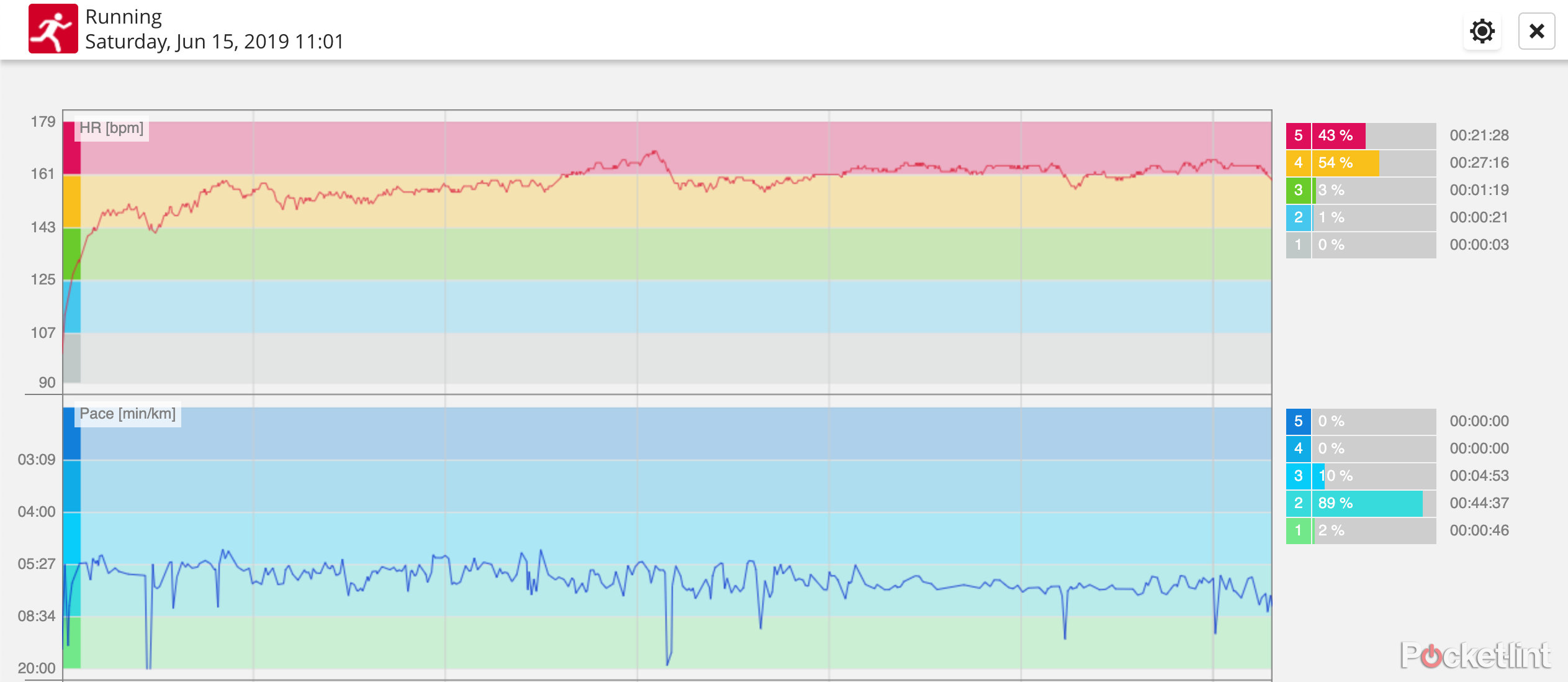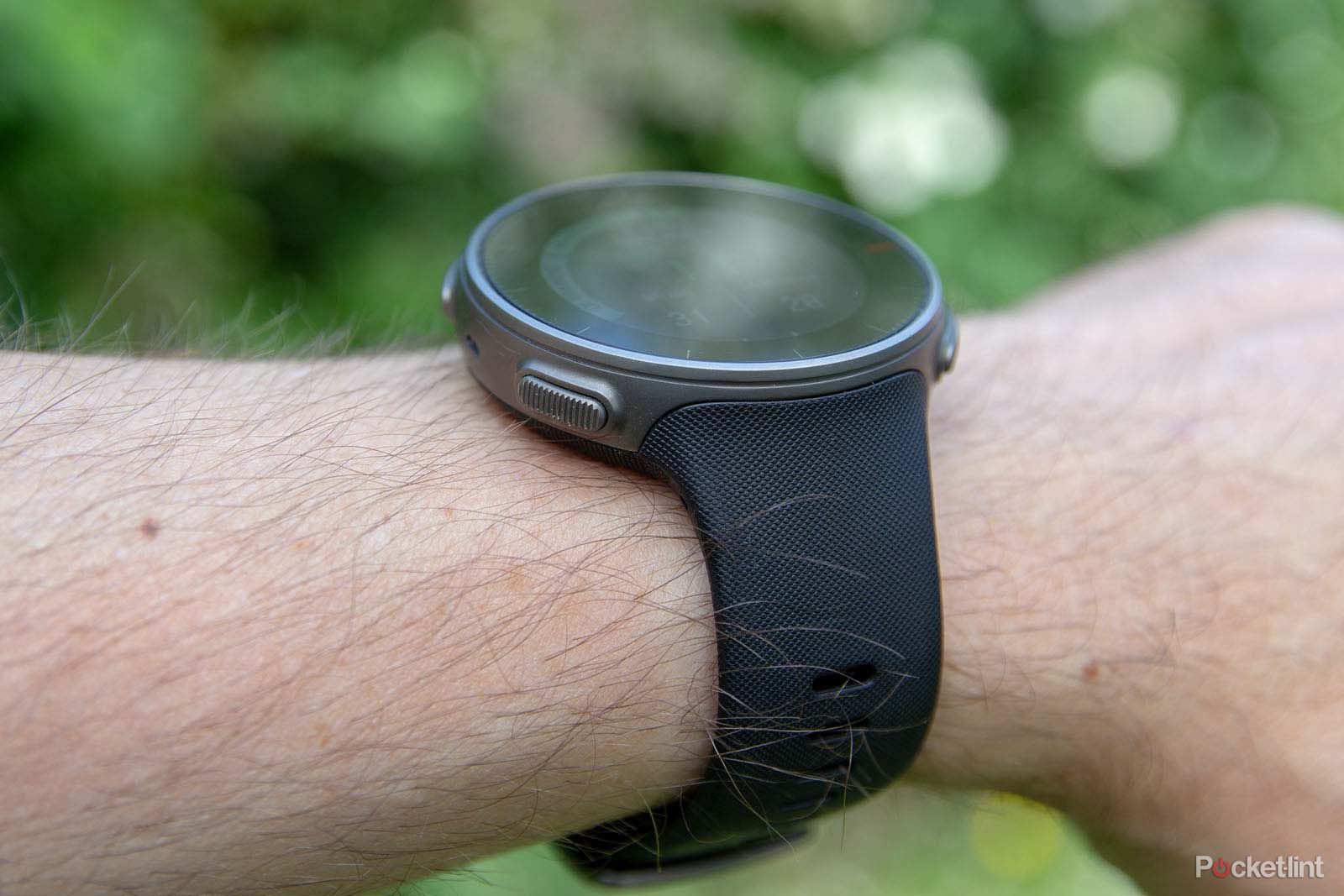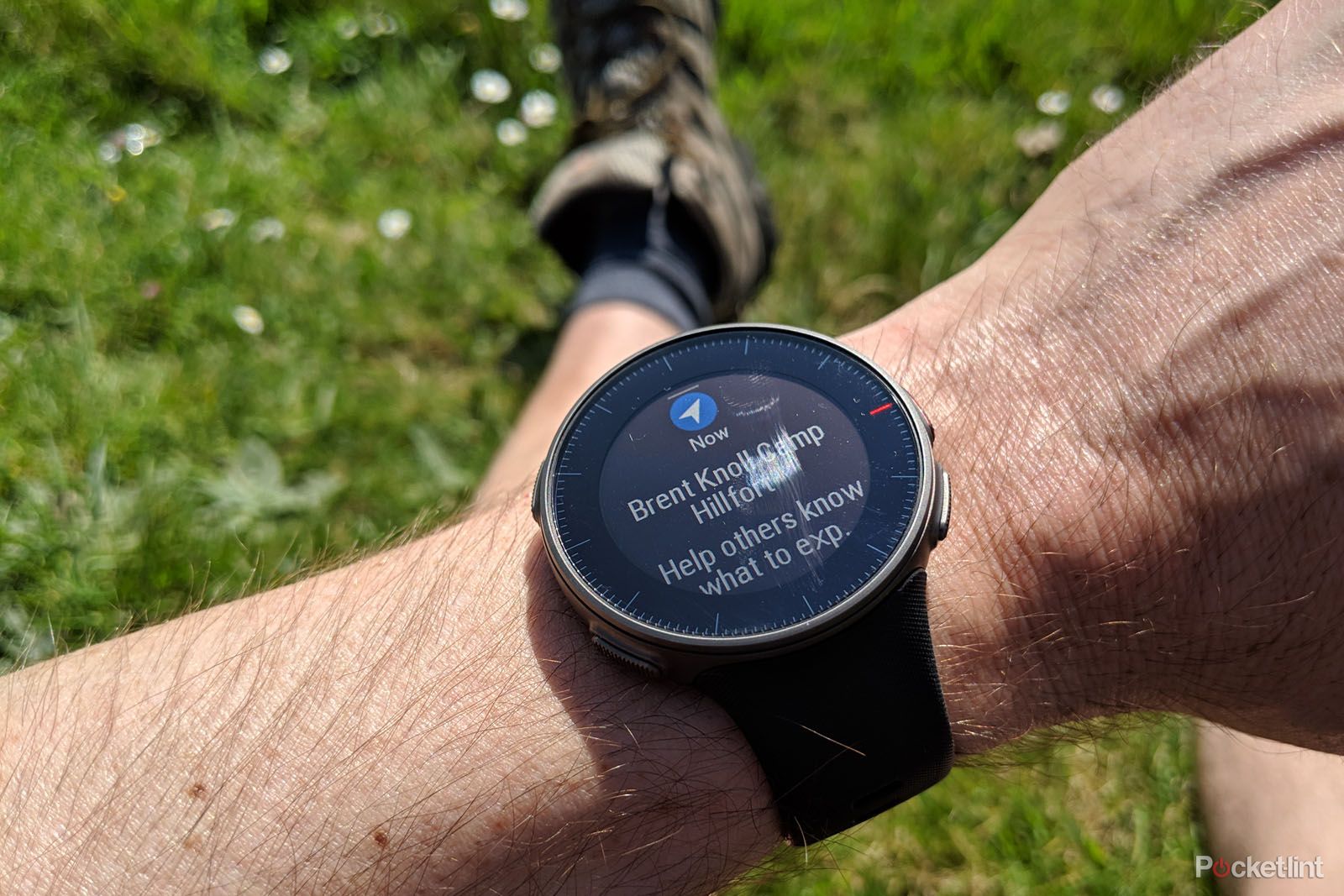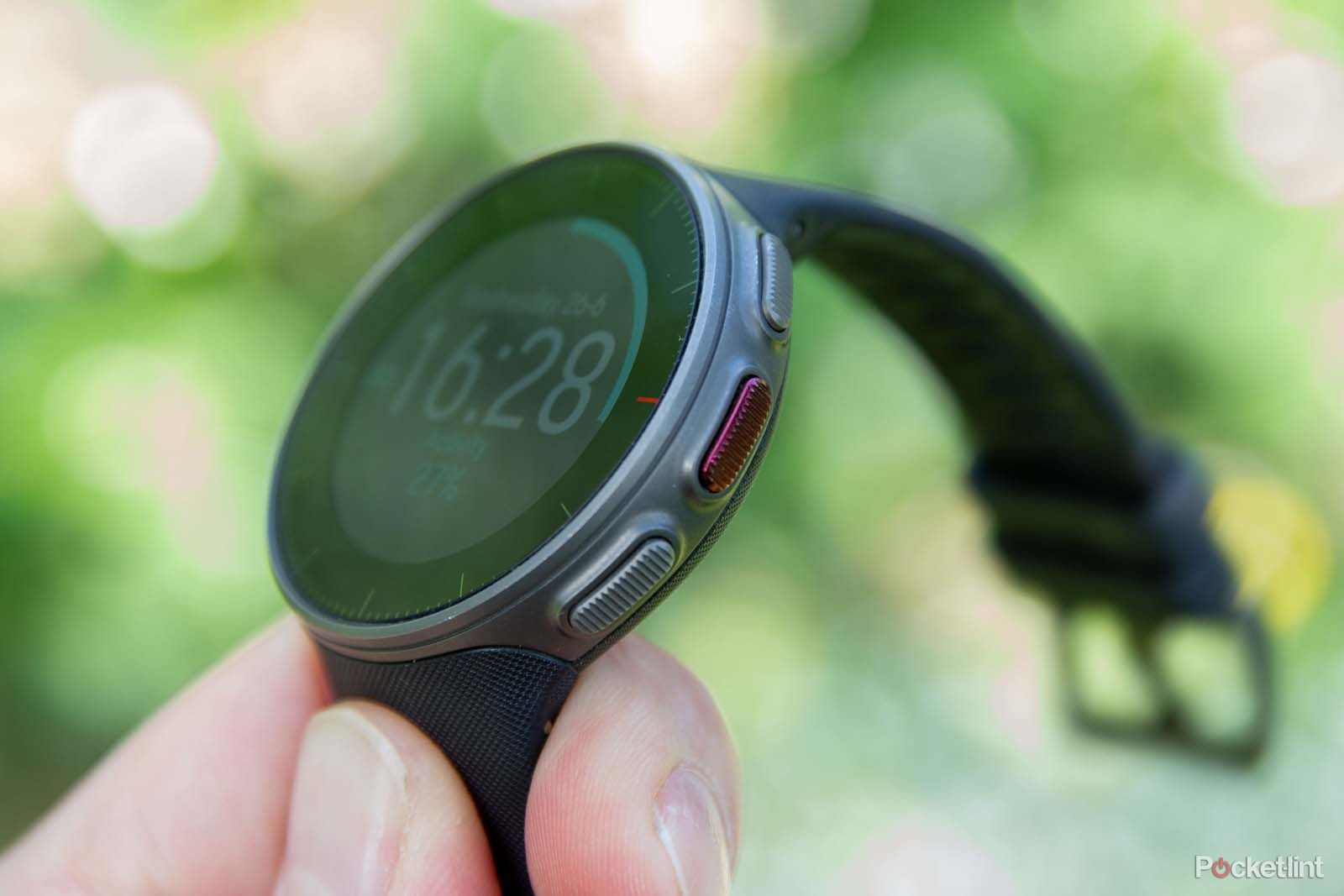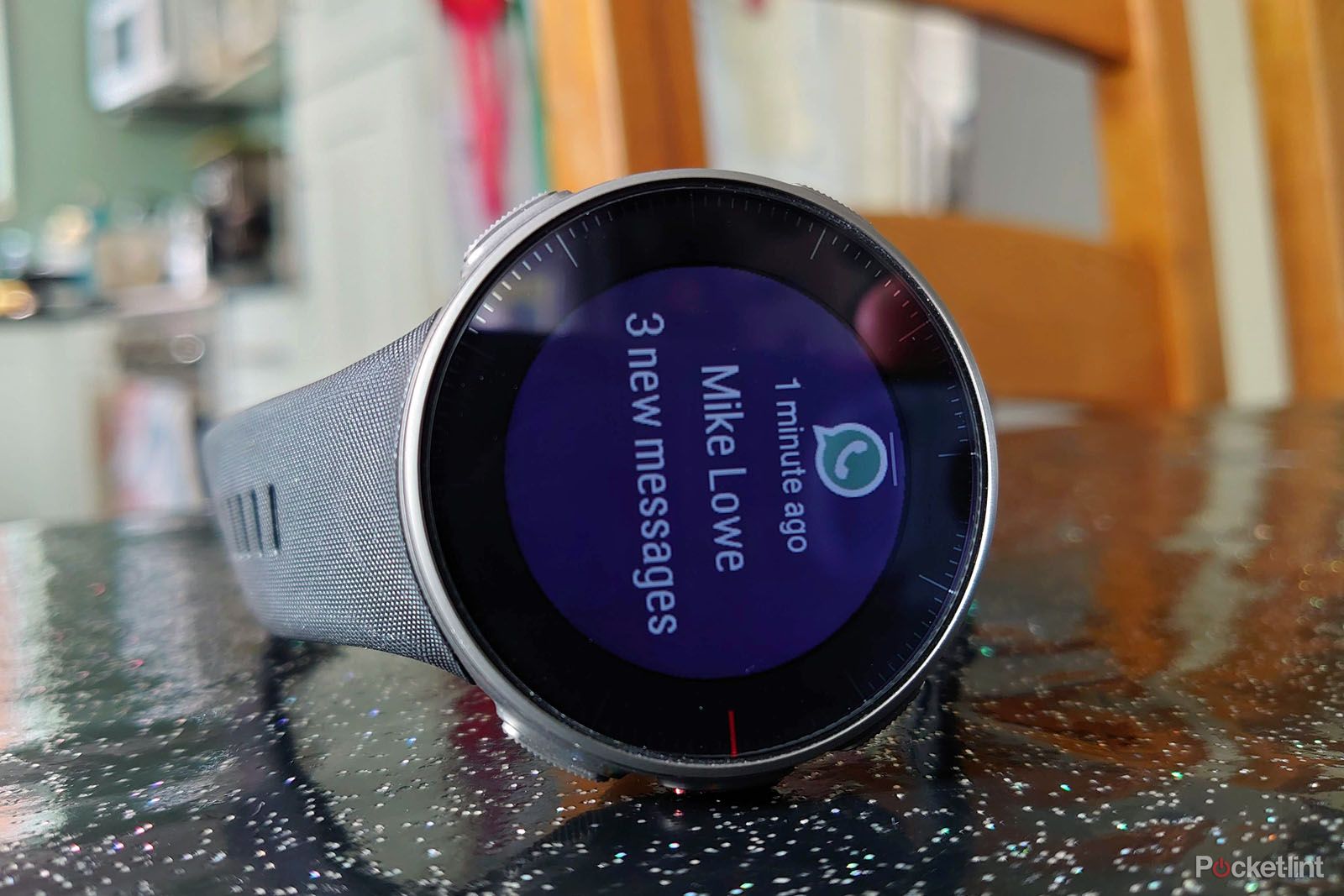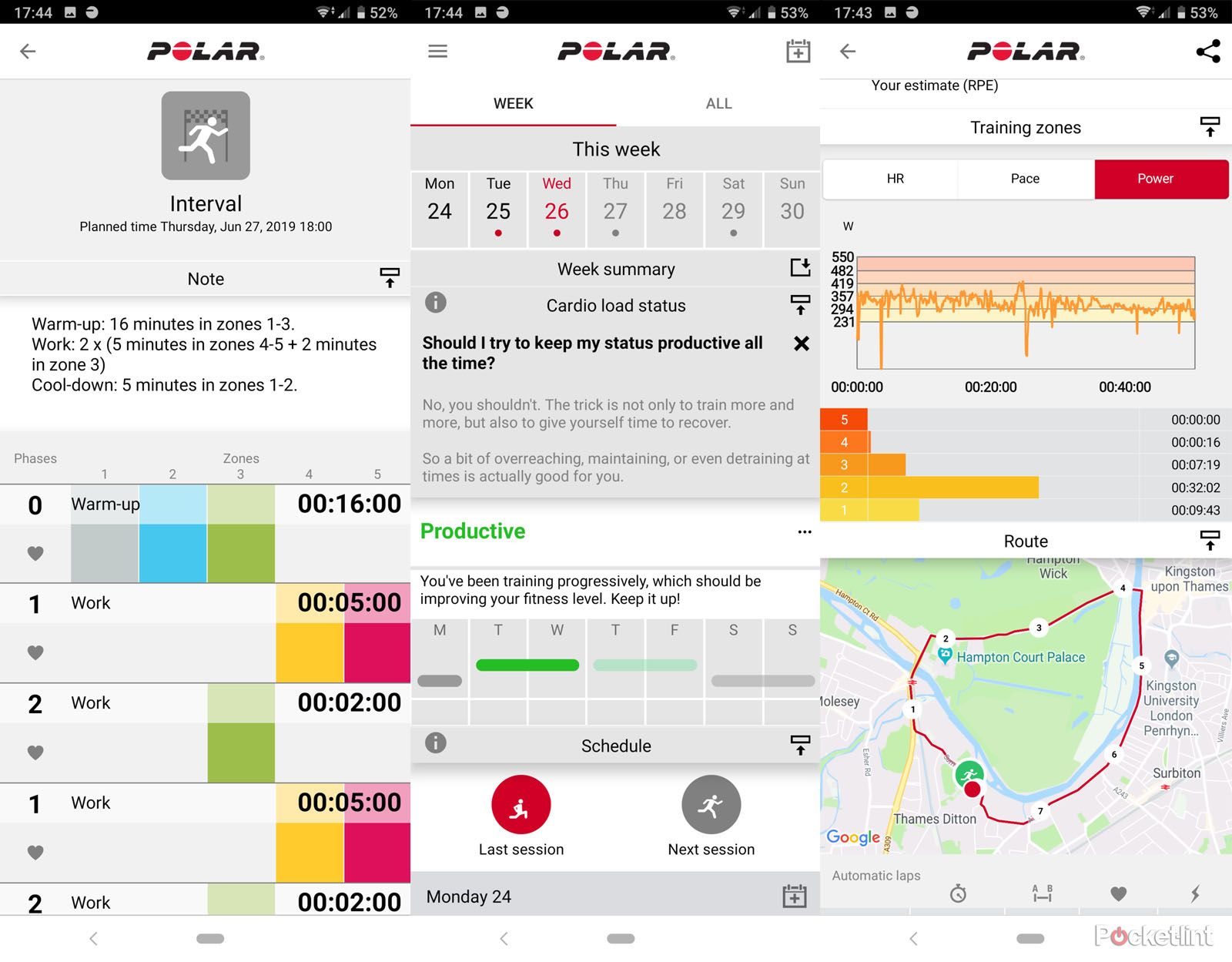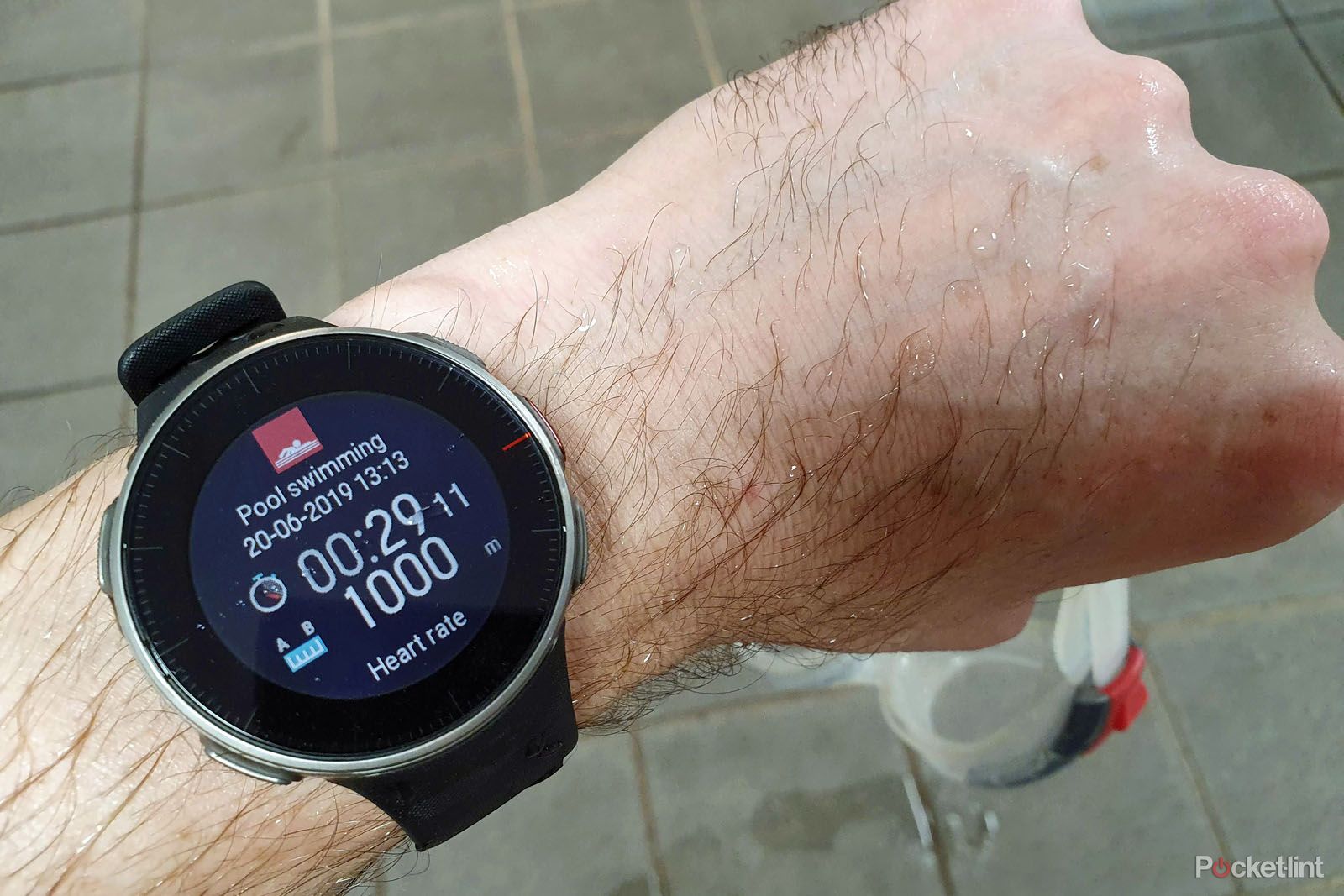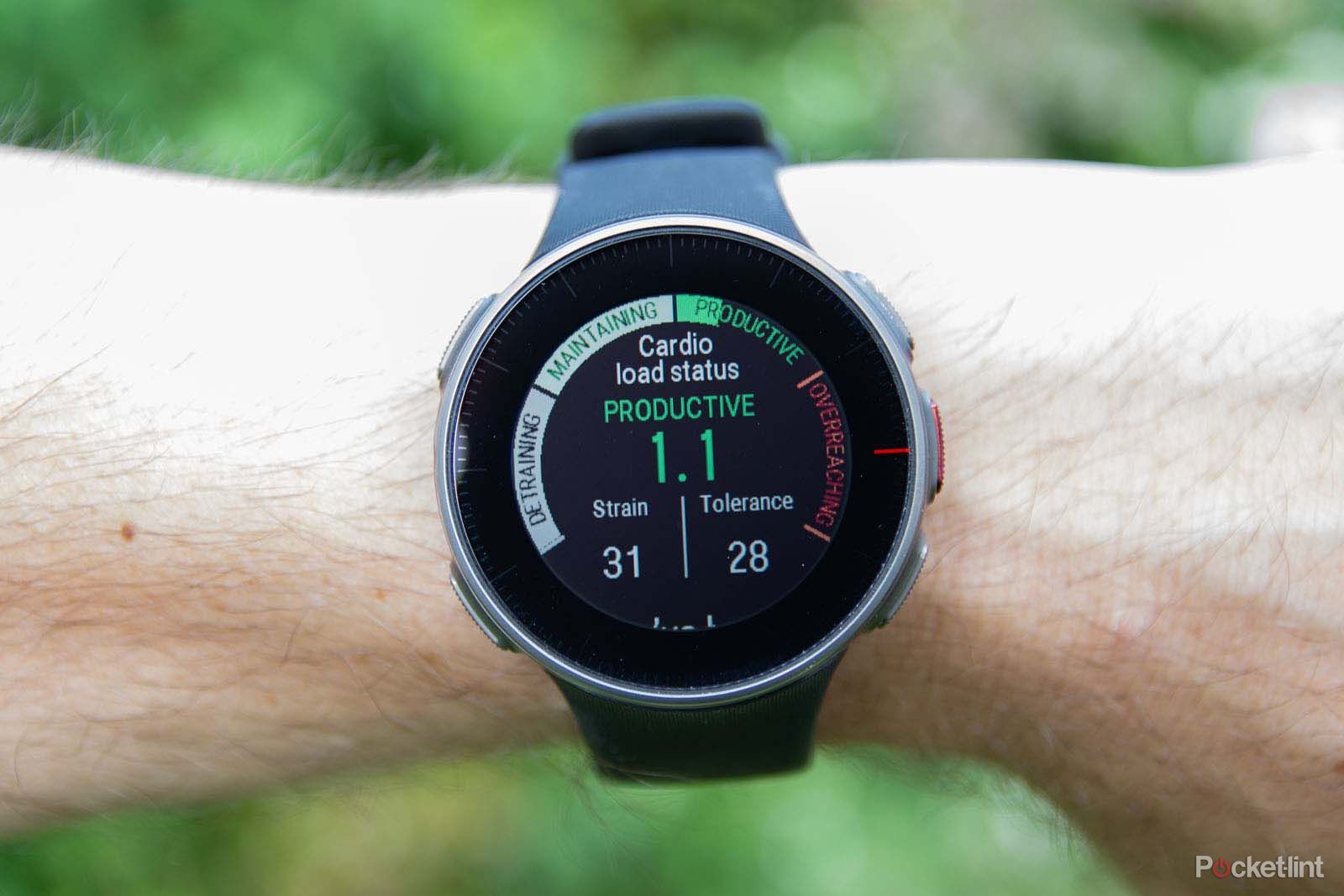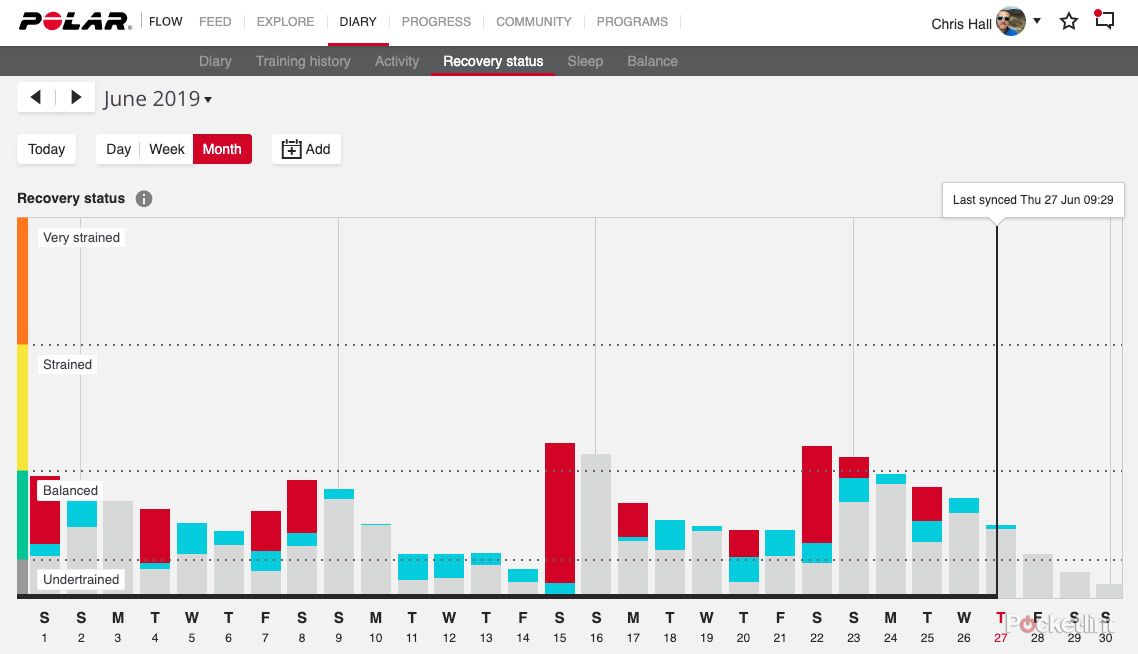The Polar Vantage V sits in the top spot for Polar, a company that's been in the heart-rate monitoring game since long before it was viable to put a heart-rate sensor in every wearable device. But Vantage V was a long time coming: the company's V800 seemed to sit in the flagship position for a number of years, while rival Garmin refreshed and refreshed and refreshed its ranges.
A false start followed. We started reviewing the Polar Vantage V some eight months ago. At the time it seemed inaccurate, it lacked smartphone connectivity, it didn't deliver on its promise. So we waited and waited, until - following software updates - the Vantage V started to get into its stride. Was it worth the wait?
Our quick take
It's taken us a long time to reach the point where we're happy to commit to this review. The Vantage V didn't get off to a flying start, because we had issues with watch-based heart-rate tracking and some of the features weren't yet there. But this is a watch that's become more fully-featured since launch and more accurate - so there's now a lot to love about it.
The problem that Polar faces is that Garmin is running away with features like customisation, payments and support for offline music that the Vantage V device doesn't get anywhere near. That draws a line in the sand and forces you to make a decision, because this watch isn't cheaper as a result either.
The Vantage V is a flagship device, it can track and monitor your daily activity, your sleep, your sport-specific training and give you feedback through the whole thing. It's elegantly designed and comfortable to wear. It's not without some shortcomings, but it's still a very capable device.
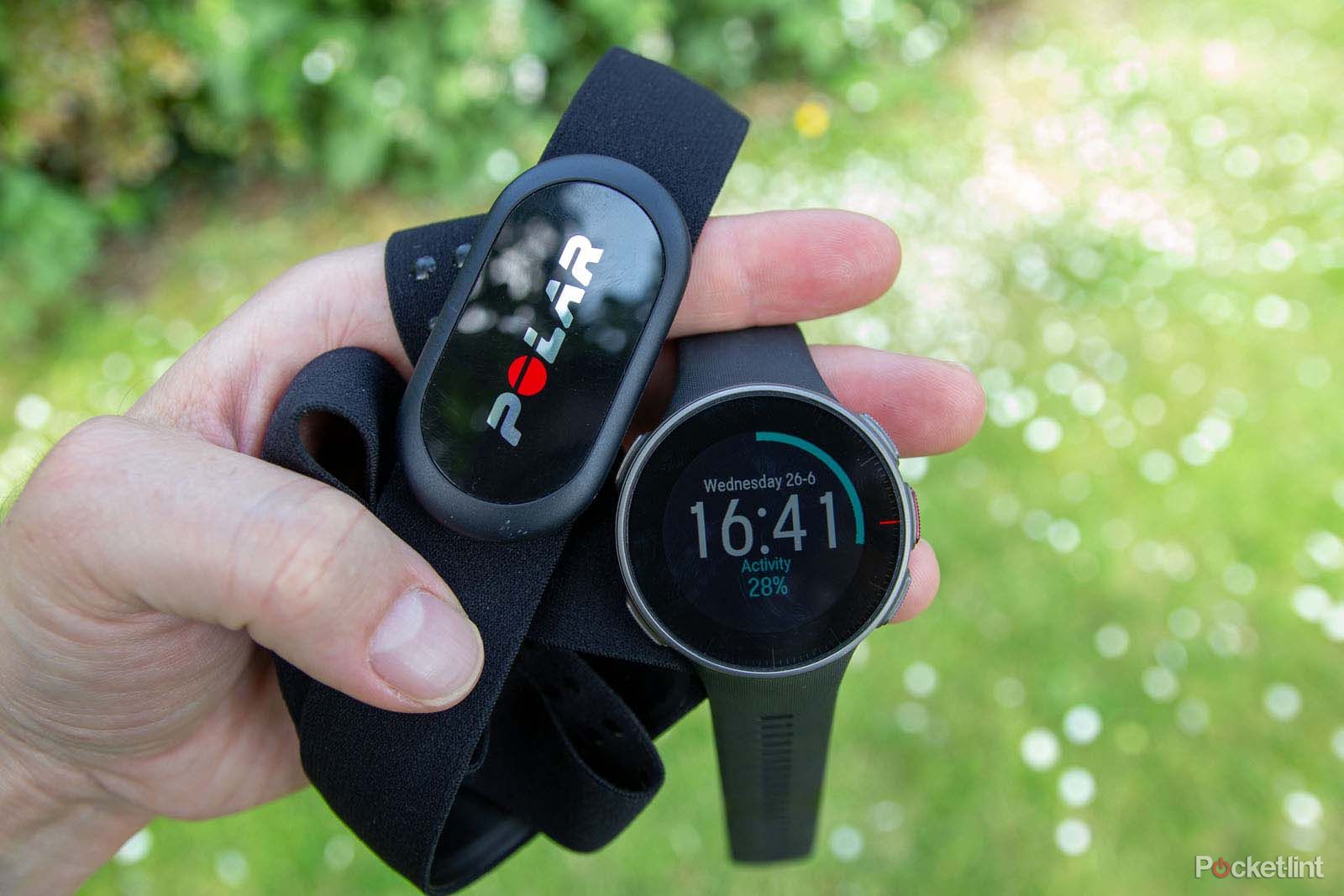
Polar Vantage V sports watch - 4.0 / 5
| FOR | AGAINST |
|---|---|
|
|
Polar Vantage V
Rethinking heart-rate tracking
- Wrist-based heart rate tracking
- Chest strap in the box
Our first Polar device was a simple heart-rate tracker. It was something we adopted, having used them in the university laboratory back in the late-90s, as our first experience of chest-strap heart-rate monitoring.
It was 2015 before Polar moved to wrist-based sensing, while the Vantage series introduces a new system. Called Precision Prime, it uses optical, 3D and electrodes to gather data using three different sensor groups on the back of the watch.
Polar says it's the most accurate wrist-based system, but it was here we really that we struggled to really get on board with the new setup. The results we got showed all the symptoms of failure to monitor accurately: consistently lower or higher than average results, a slow startup leaving the first 10 minutes of the run looking like it was warming up, and extraneous results.
A software update made things better, but having struggled through some cold winter runs with inaccurate results and trying different tightness, licking the sensors and so on, we weren't left with much confidence in the system. In the warmth of spring we still found - using manual carotid pulse - that the measurements weren't accurate. When you're busting a gut and it's telling you your heart rate is 20bpm lower than you expect, it raises questions.
Whether this was our sample or a flaw in the system, we don't know - but we do know we're not alone in seeing these inaccuracies. It's not only that we got these inaccurate results, it's that it wasn't consistent - on other days, it would perform as expected.
The saving grace for us was that our Vantage V came with a H10 chest strap in the box (it bumps the price to £479 over the £439 price without the strap). This is comfortable, adjustable and, by-the-by, universal - as it will also pair with Garmin devices. We also found it to be solid in performance. Yes, we've seen one ghost result, but the majority of the time it's fast to react and accurate - a much more dependable training tool than the wrist-based alternative.
That's important because heart-rate forms the basis for measuring intensity; heart rate is a variable that can be measured, and if it's inaccurate, then any other metrics that are algorithmically calculated from that data will also be inaccurate. You can buy the Vantage V without the chest strap, or pair it with an existing strap if you already have one.
Three cheers for a round display
- Measures: 46 x 46 x 13mm / Weighs: 66g
- Stainless steel and polymer body
That first Polar device we owned was round, before a trend emerged that pushed square displays. We've always blamed the Garmin Forerunner 101 - that beast was the size of a house brick, but was one of the first consumer wrist-worn GPS devices. Polar had square displays on many of its devices and in many cases that lead to a squarer body.
The Vantage V looks a lot better than previous devices because it slims down into a rounded body. It's nice and sporty in its design. Big, yes, but if you've worn the equivalent from Garmin, like the Forerunner 935, then you're looking about the same sort of size. It measures 46mm across the face, which is topped with Gorilla Glass.
The body and bezel are stainless steel - although there's now also a premium titanium model - while the back is polymer. It all feels solid and we're impressed with the build quality, as it has withstood scratches and wear over the eight months we've been using it: it still looks as good as new, except the strap, which naturally has attracted various crud inside.
The strap is soft but strong, flexible and conventional, although the two loops to accommodate the excess are a pain as they have tabs to lock into the strap and keep things in place - meaning it's sometimes fiddly to get everything in the right place.
There's quite a pronounced bump on the rear of the watch with all those heart-rate sensors, leaving four depressions in your skin thanks to the electrodes. Once we'd decided that the chest strap was going to be essential, we loosened the watch off a little.
Control and connection
- Five buttons and touch
- PolarFlow smartphone app
There are five buttons arrayed around the watch, as well as touch control. With touch you can swipe through the display screens for a glanceable summary of some stats - activity, your recovery status, and sleep data. From each screen you can press the red button to progress through to get more details - for example from the recovery status you can click through and see the figures for your training load and baseline tolerance.
What you don't get is anything like Garmin Connect IQ, which offers a lot more customisation and adaption of what the watch offers, so it feels as though Polar isn't as flexible as Garmin when it comes to the platform.
That neatly leads us over to the next important point: connectivity. These days, if you don't connect to a smartphone, you basically don't exist. Fortunately, the Vantage V does sync with Polar Flow on Android or iPhone devices and the syncing and pairing process is a lot more reliable than it was a few years back.
Once connected to a phone via Bluetooth you'll be able to sync data and look at your stats, but the layout still feels like it's tailored towards the fitness tracker set rather than the sports performance set. It's about daily activity, rather than core stats. In many regards, the Polar Flow website is a much better resource where you can actually examine your data, rather than just seeing if you've been active enough over the day.
One of the additions to the Polar Vantage V since launch was an update that added smartphone notifications. It was almost criminal that the watch didn't offer this from the start, but that's now been rectified, so you can see who is calling, glance at messages and notifications - but you can't really act on them. Sure, you can cancel a call, but there's no support for Android quick replies for messages, which is available on Garmin.
In truth, the notifications are fairly basic and sadly Polar would struggle to compete against any smartwatch in this regard. It's one area where those big rivals Garmin offer a much more complete solution. Equally, there's no support for music through the watch, not even music controls for a connected phone.
Performance and sports measuring
- Dedicated sports modes
- Supports multisport events
- Running power from your wrist
What you do get support for is a whole range of sports. Many will be buying the Vantage V as a running watch first and foremost, although there's broad appeal for multisport athletes.
Running is likely to be the mainstay of the Vantage V's work and it's here that you get a lot of metrics. We've mentioned heart rate separately, but when it comes to distance and pace we've found the results to be accurate compared to similar level devices and to on-road measurements.
The GPS is pretty quick to find your location and although we've started some runs with a cold start, you'll soon find that it's caught up and your distance is accurate. It can also give you a return routing, so if you're running in a strange place, you can find your way home again - great for work trips or vacations.
The running metrics also focus on another measurement: power. The idea is to give you something else apart from speed and intensity (from heart rate). Previously runners would have needed an additional sensor, but the Vantage V has it all in the watch.
It aims to measure this power based on speed, gradient and force. The last of these is applied via a lab-tested algorithm to result in a figure - in Watts - that you can understand. What it really does is take into account fast changes both in speed and or altitude, where you reach or surpass your aerobic threshold where your heart rate isn't a direct reflection of your activity.
Running power can help demonstrate that you are getting stronger through training. That might be hill repeats, it might be through gym work, but ultimately, running power is designed to show you that your training is helping you produce more power - so you're not left to judge that by heart rate and the stopwatch alone.
Running power also feeds into the training load system that we'll talk about in a minute. Essentially, for a runner with more advanced needs, it's another training metric at your disposal.
There are clever metrics for a range of other sports. Pool swimming, for example, will automatically tot up the distance based on your turns, can automatically detect the stroke - with a breakdown per session - and our favourite feature is giving you a rest timer that starts as soon as you stop. If you're swimming sets then you don't need to depend on the pool's pace clock, which is great.
You also get SWOLF - a common measure of stroke efficiency - which is great if you're working on your technique. Hang on, you're a swimmer, so you're always working on your technique.
Each of the training sections offer multiple pages and while you can't customise them all as you can on a Garmin, they pretty much give you the information you'll want. Cycling, for example, gives you speed, distance and HR on the main page, with the second page giving you current altitude, how much you've climbed and how much you've descended.
The Vantage V will also record multisport events. Rather than being pre-defined - triathlon or dualthon, for example - you string them together to form the whole event. For triathlon, for example, you'd select multisport - outdoor swim - bike - run. Each time you press the session end button, it moves you into transition, then you have the select the new sport and press start again. You'll get a timer on your first screen for that leg, with a total duration timer on a later screen. It's a bit fiddly, but it means you can construct any sort of event you like made up of any sports.
The battery life of the Vantage V has been pretty good too. When this watch was new it wasn't so good, but following software updates that has improved. We get about two weeks of use - with plenty of monitoring in there - and then it's a quick recharge using the magnetic pad it comes with.
Load and recovery measurement
- Training status
- Orthostatic testing
A big part of modern sports devices isn't just measurement of what you've done, it is advice about what you should or shouldn't do, which is where recovery comes in. Polar has a system that adapts to your training, setting a baseline for what's normal for you and then advising on your status, based on your activity.
It's designed to help you safely train without overtraining, while acting as a motivator for those lazy days. It gets its own screen on the watch and it's the one we ended up using all the time. It shows a ring around the outside moving from detraining through to overtraining. Somewhere in the middle is maintaining and productive, which is where you want to be.
Equally, if you increase too much, you'll be castigated quickly, but perhaps that's not a bad thing. For most people, a happy 10 per cent increase in training time is a good rule of thumb - and that's the sort of thing that the watch likes.
There's some reflection of background activity in this too, so once you're looking at Polar Flow, you can see days where you walked 20,000 steps, for example, with a bigger load bar against them. We also like the fact that it's not just one sport - it's everything. So if you throw a swim into your running routine, the load from that will be reflected and you can adapt accordingly.
There's another side to recovery too: the orthostatic test. This needs the chest strap and will measure heart-rate variability with a test that charts your resting rate and then your recovery when you stand up. Using this test you can establish a baseline and then detect when things change - that might be lack of recovery (also measured by load above), but it could also be a lack of sleep or work stress that's having an impact on your body.
Again, it's another set of data that will tell you when something is up. In this case it takes a little more time - you need to do it regularly, in the same conditions at the same time of day (first thing in the morning basically) - so it's more of a time commitment.
Polar Flow is part brilliant, part confused
- Smartphone app
- Supporting website
- Free running training programmes
We've mentioned Polar Flow a few times, which is Polar's equivalent of Garmin Connect. It's both the app you'll use to connect your phone to your watch and the place where all your data is managed. As we said, the app opens showing your daily activity, which feels a little like it's geared toward the step-tracker crowd, but there is a lot more data hiding within.
The watch itself is a bit limited in what you can get to. You can view your workouts and drill down through the averages for those events, but most of the goodness is in the app - or even better - on the website.
That's a bit Web 1.0. Having to go to the website to get the best experience suggests that Polar hasn't quite adapted to the modern world, but it just doesn't seem as easy to access information in the app. You can't, for example, access the running training programmes that the website offers - and these are great.
You can select what you want to train for and make changes to the programme on the website and that's the synced to the watch. It's actually a really great system - and we like that it predicts your race time based on your existing running index - and gives you the chance to say which days you want as rest days. In addition to varied training sessions, it adds supporting sessions too, like stretching or core strengthening - with YouTube videos to guide you through those sessions. Those activities are also then available as a session to record on the watch - offered up when you press the start training button on that day.
So here's the oddity of the Polar Flow setup: there's a lot of goodness that some people might never discover. As we focus on smarter watches and dynamic apps to support them, it's easy to miss much of what's on offer from Polar. What you potentially miss are some of the most connected and beneficial parts of this system.
Polar Vantage V
To recap
A flagship device that can track and monitor your daily activity, your sleep, your sport-specific training and give you feedback through the whole thing. It's elegantly designed and comfortable to wear. But it's not without some shortcomings, and Garmin has more customisable offerings.

